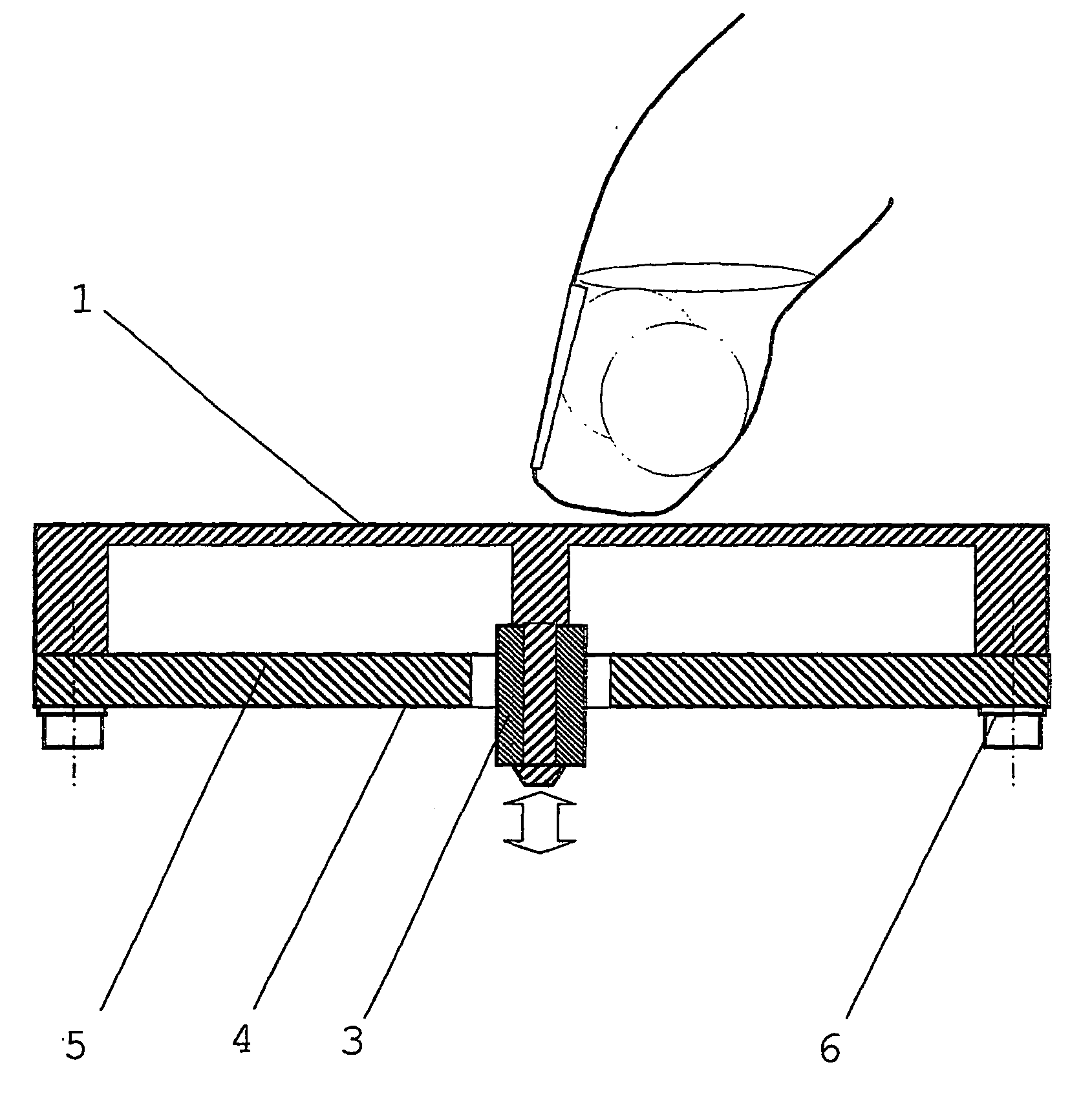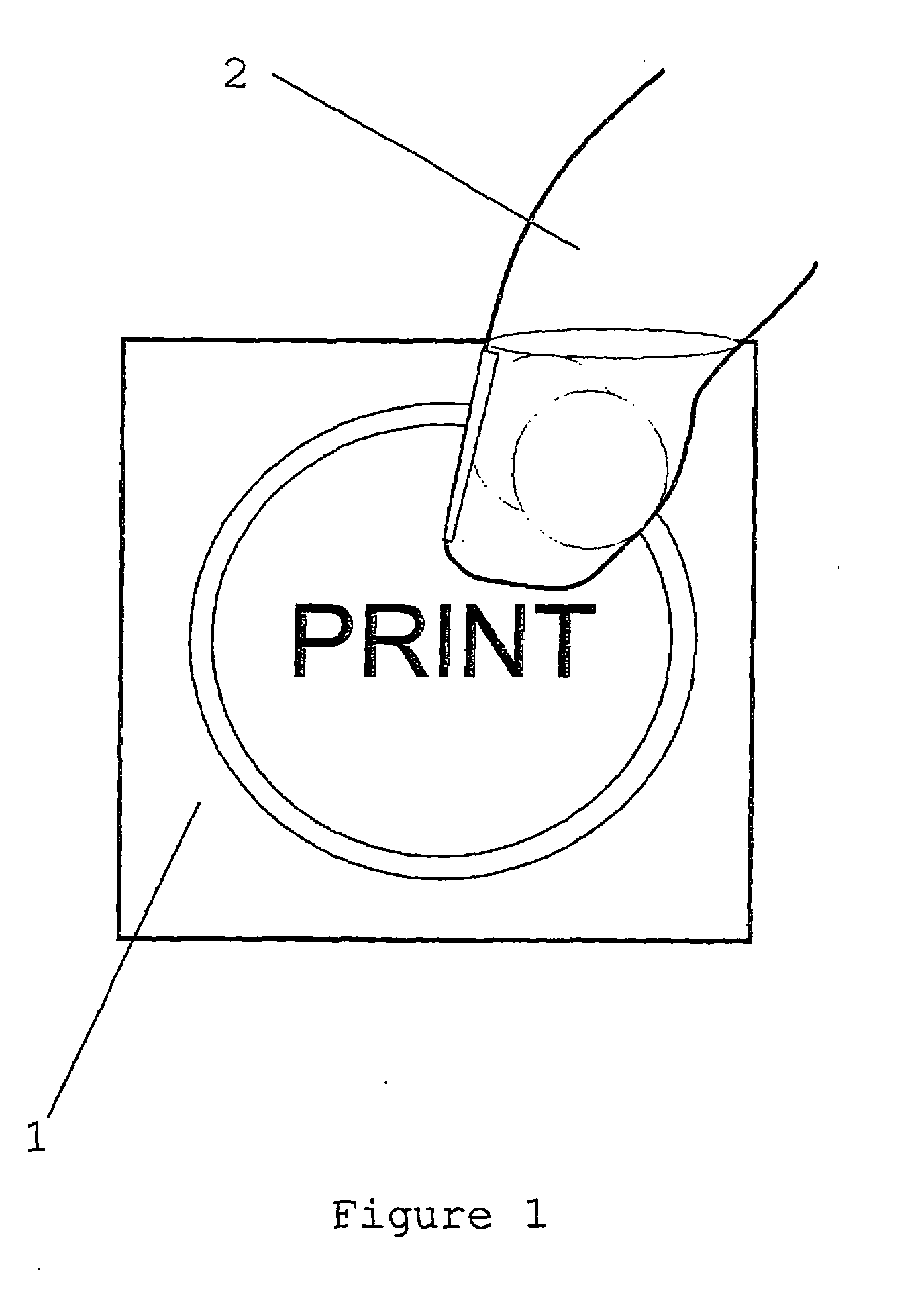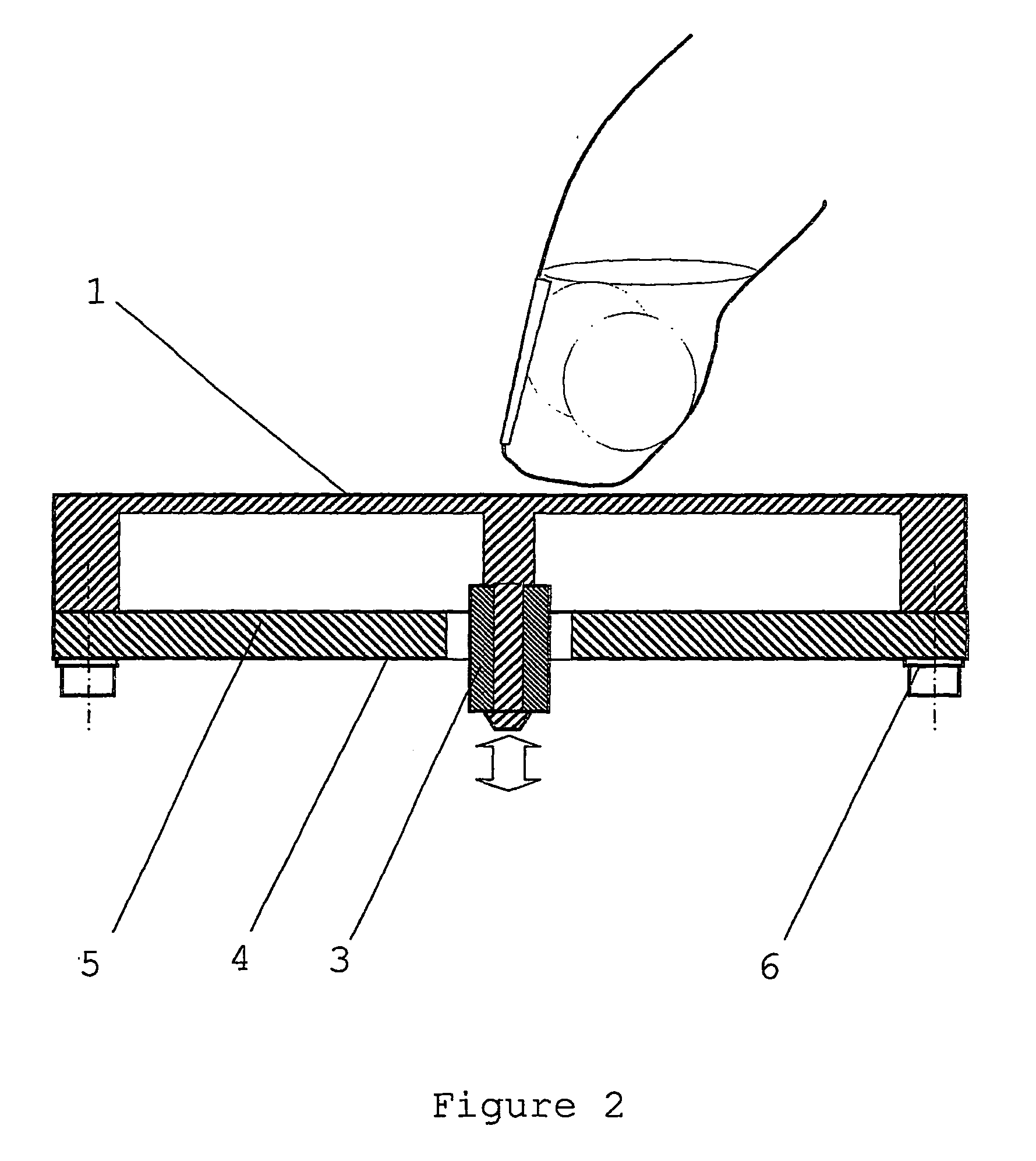Detector
a detector and detector technology, applied in the field of inductive detectors, can solve the problems of inability to distinguish between a user's finger and a water droplet, prohibitively expensive, and not particularly reliable or safe for many applications, and achieve the effect of small deflection
- Summary
- Abstract
- Description
- Claims
- Application Information
AI Technical Summary
Benefits of technology
Problems solved by technology
Method used
Image
Examples
Embodiment Construction
[0037]FIG. 1 shows a plan view of a man-machine interface push button. In this case a printer button is used as an example. A substantially impermeable, protective fascia panel [1] is printed with user instructions. The panel is formed by an injection moulding of a glass filled polymer such as nylon. The panel protects the inside of the printer from the external environment for reasons of safety, hygiene and reliability. A user's finger [2] presses down on the panel [1]. The detector is located behind the push button but is not shown here for clarity. Only one push button is shown in FIG. 1 for reasons of clarity but usually, several push buttons are located on a keyboard or control panel.
[0038]FIG. 2 shows a sectional view of a preferred embodiment of the man-machine interface push button in which an EID [3] is secured to a panel [1] by heat staking. Preferably, the ED [3] is a ferrite or alternatively, an electrically conductive element such as a copper cylinder. Any deflection of...
PUM
 Login to View More
Login to View More Abstract
Description
Claims
Application Information
 Login to View More
Login to View More - R&D
- Intellectual Property
- Life Sciences
- Materials
- Tech Scout
- Unparalleled Data Quality
- Higher Quality Content
- 60% Fewer Hallucinations
Browse by: Latest US Patents, China's latest patents, Technical Efficacy Thesaurus, Application Domain, Technology Topic, Popular Technical Reports.
© 2025 PatSnap. All rights reserved.Legal|Privacy policy|Modern Slavery Act Transparency Statement|Sitemap|About US| Contact US: help@patsnap.com



